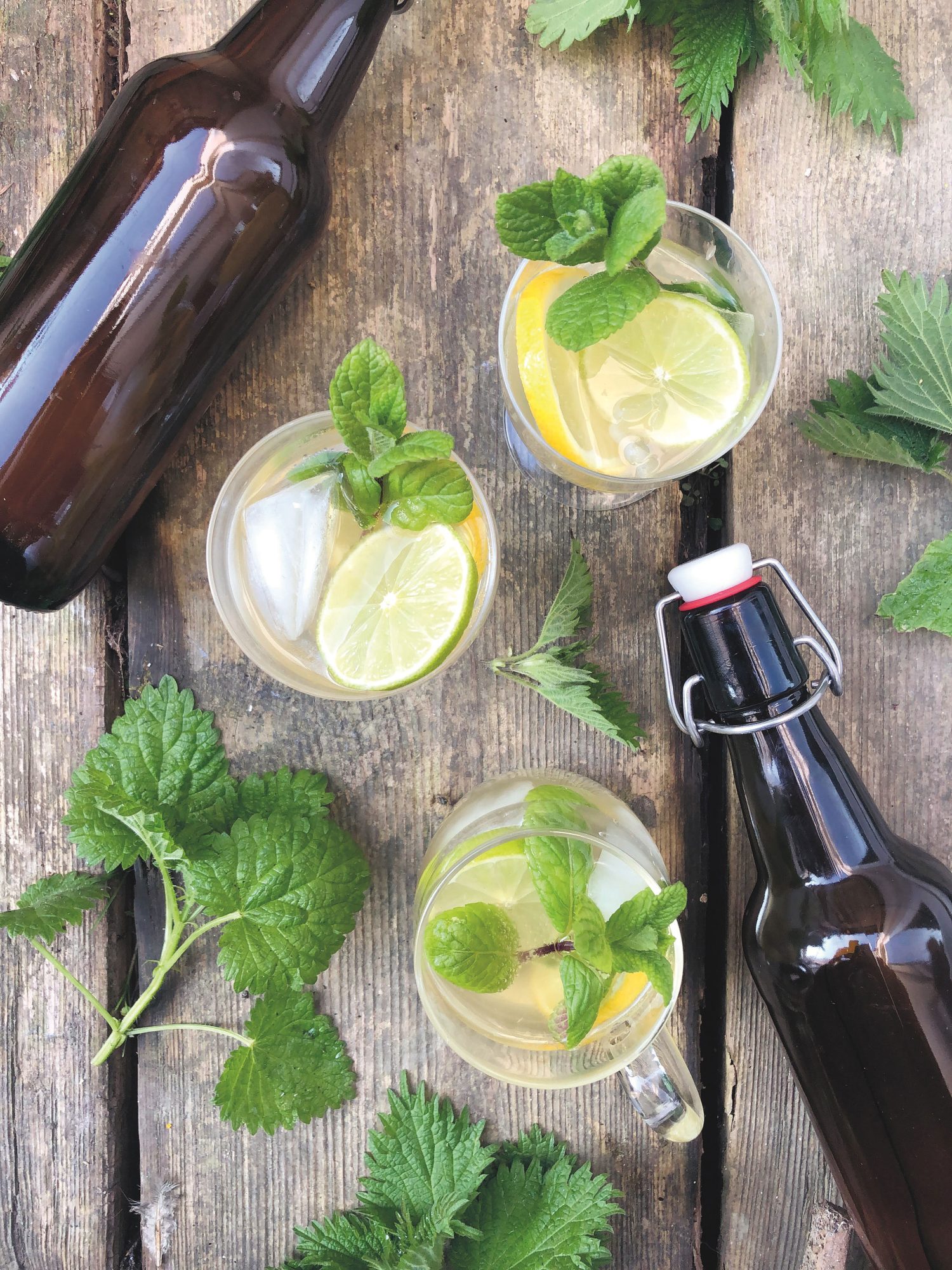
WILD MAGIC! Foraging Feasts
by Craven & Valley Life
I first tried elderflower Turkish delight after reading the lovely John Wright’s recipe and haven’t stopped making it since. My recipe is made in the traditional way, so doesn’t include any gelatine.
Makes approx. 40 pieces
Ingredients
20 elderflower heads
4 tbsp lemon juice
750g (3 ¾ cups) white sugar
100g (¾ cup) cornflour (cornstarch) plus 2 tbsp, for dusting
Coconut oil, for greasing
2 tbsp icing (confectioner’s) sugar, for dusting
Method
First, snip the flowers from the elderflower sprays from their stalks and put the loose flowers into the centre of a clean muslin cloth. Gather the sides of the cloth and tie with food safe string, so the flowers are contained. Make sure you leave a long piece of fabric or string to hold them while they’re suspended in the pan. Put to the side for later.
In a large pan put 300ml water, the lemon juice and white sugar and heat gently and stir until the sugar has dissolved. Place a thermometer into the pan and bring the syrup to 250˚F/120˚C. This should take 15 – 30 minutes depending on your hob.
In a slightly smaller pan, mix the cornflour with 100ml water and mix until smooth. Now, over a low heat, add your cornflour mixture to the lemon syrup little by little, mixing all the time until combined.
Bring the mixture very slowly to the boil (slow simmering is key here, so use the smallest ring on your hob) and simmer for 10 minutes. Make sure you stir constantly. Now suspend the muslin bag with the flowers in the liquid and continue to simmer on a very low heat for another 20 minutes. Squeeze the bag with the back of your spoon to impart the most elderflower flavour possible.
The mixture will become very thick and almost clear. You will know it’s ready when you can run your spoon through it, and the line drawn through the mixture holds its shape. When it’s done, leave to cool slightly, for 10 minutes.
Line a square/rectangular cake tin with cling film and rub a little melted coconut oil over the film. Now pour in your Turkish delight mixture and leave to set overnight. In the morning put it in the fridge for a few hours before you cut it. When you’re ready, cover a chopping board with the two tablespoons of cornflour mixed with the icing sugar. Turn out your Turkish delight on to the powdered board, cut into cubes and roll in the powder. The Turkish delight will last up to a month in an airtight container.
Nettle Beer

Nettle Beer
This nettle beer is light, refreshing and perfect on a sunny spring day! It’s less like a lager and more like a refreshingly herbal, slightly boozy glass of fizz. Even if brewing isn’t something you’ve done before, this recipe is well worth a go.
Makes 5 litres (8¾ pints)
Ingredients
At least 70 nettle tops (the top 6–8 leaves of the stinging nettle)
6 litres (10 ½ pints) water
500g (1lb 2oz) sugar (any type)
10g (¼ oz) brewer’s yeast (you can use a beer or wine yeast for this recipe)
Juice of 2 lemons
Thumb-sized piece of fresh ginger, grated (optional)
You will need
1 demijohn or large, sterilised bucket
1 muslin cloth (optional)
Swing top bottles (or use washed large plastic bottles)
Funnel or siphon tube
Method
The First Ferment
This is the first ferment. You’ll be making your ‘wort’, which is essentially a tea, plus yeast and sugar. The yeast will eat the sugar, making your nettle beer alcoholic and giving it a beautiful taste.
Put the nettle tops into a large pan (you may need to use two) and pour over the water. Bring to the boil, then boil for about 30 minutes until you have a strong nettle tea.
Scoop out the cooked nettles and save them for cooking – try making nettle pesto or nettle samosas.
Remove the nettle tea from the heat and stir in the sugar until dissolved. Allow your mixture to cool to just above room temperature.
Put the brewer’s yeast into a small jug and stir up with a little warm water. Pour this into your nettle tea, add the lemon juice and stir. If you want a slightly spicy beer, add the grated ginger to the mix too.
Now pour this into your sterilised bucket, or siphon into your demijohn. If you’re using a bucket, you’ll need to cover it with a muslin cloth.
Leave in a warm place for 5–7 days. Keep an eye on the activity. It’s ready for bottling when the bubbling has slowed right down.
The Second Ferment
This is the second ferment and is all about making your nettle beer fizzy. Now’s the time to siphon the beer into your bottles. However, all that fizz means building pressure inside your bottles, which is why plastic bottles are safest. You’ll know your brew is fizzy and carbonated by giving the bottle a squeeze (it will be hard) and the sides and bottom of the bottle will bow out. Good-quality swing-top glass bottles are beautiful and the top will pop open if the pressure gets too high. I recommend you don’t use glass bottles without a swing top as there is a risk they might explode!
Siphon the beer into your bottles. You can try to pour into a funnel but it will be much easier to use a siphon tube, which will only set you back a few pounds.
Store your bottles out of the way. If you’re using glass, I recommend wrapping them in fabric – just in case!
The beer will be ready to drink in around 7 days. Pop open a bottle and taste it; if it’s too sweet for you, leave it a few more days. Chill it when it’s ready.
I like to serve this over ice with lemon slices and mint leaves.
Your beer will keep for at least a few months. I’ve had bottles a year old and they’ve been delicious.
Extract from Wild Magic by Fern Freud
Published by Ebury Press price £16.99.
Craven&ValleyLife Summer 23






